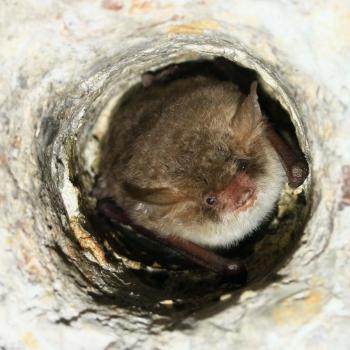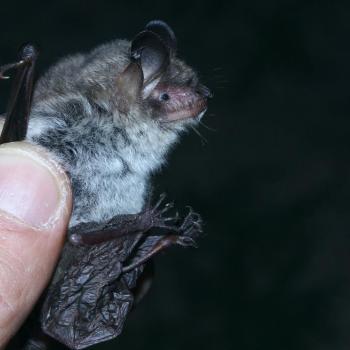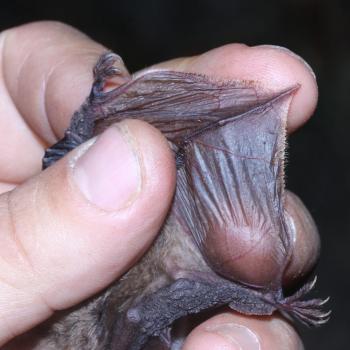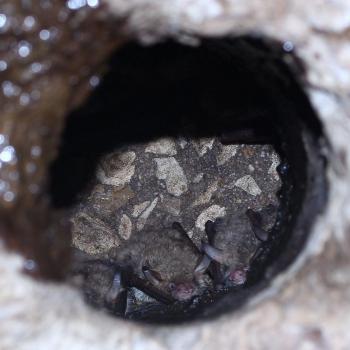Natterer's bat
-
Myotis nattereri (Kuhl, 1817)
It is a small bat with a wingspan of 24-30 cm and a weight of 7-10 grams. The white gray belly fur is clearly delimited from the brownish-gray fur on the back. The tragus curves slightly forward and is longer than half the length of the ear. The "S" shaped spur is long, running about 2/3 of the tip of the tail membrane, which is covered by two rows of short hard hair. These two characteristics are essential for identifying the species.
Natterer's bat ranges throughout Europe, from Great Britain and southern Scandinavia to the north to the Mediterranean, including some islands (Balearic Islands, Corsica, Sicily). It is probably absent from the Iberian Peninsula and northwest Africa, where the sibling species M. escalerai is spread. Similarly, some populations of Cyprus, Anatolia and the Middle East may belong to M. schaubi. It is widespread in Greece, as it has been found in relatively few locations in all geographical regions of Greece with the exception of southern Aegean Sea and Crete.
It can be found from sea level up to tree line and prefers forests and open woodlands, orchards and vegetated wetlands. In central Europe, summer colonies are mainly found in trees, artificial shelters and buildings. In the Mediterranean mainly in rock fissures and walls. Rock shelters, caves, mountain cellars and other underground sites, even piles of stones on the ground, are used as winter roosts.
It has a very flexible and slow flight, often near the vegetation and can hover over the ground. It collects its prey with the tail membrane above surfaces (leaves, branches, soil) and it is believed that the hard hair on the spur play a role as a sensory organ that helps it detect the prey. The maximum known age to date is 21.5 years.
Breeding colonies number up to 100 females and often use a roost network changing places every 2-5 days. It gives birth to a baby in June, which flies at 3 weeks and hunts independently at 4 weeks, while later colonies disperse. Females mature from their first autumn. They mate in both autumn swarming sites, from August to November, as well as in winter shelters.
It usually feeds on non-flying arthropods, such as spiders, harvestmen, sometimes to a large extent on coleoptera and lepidoptera.
It is included in Annex II of the Bern and Bonn Convention, as well as Annex IV of EU Directive 92/43. It is also protected by UNEP / EUROBATS and by the Greek Presidential Decree 67/81 . It is classified internationally by IUCN in the category of Least Concern. In Greece it is classified as Near Threatened because it refers to relatively few sites, forms sensitive colonies and its populations are probably fragmented.






